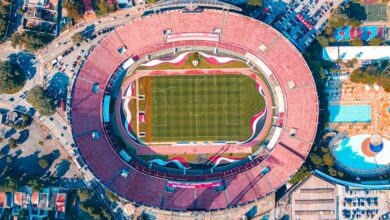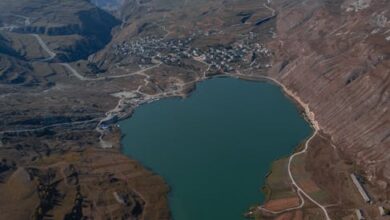OpenAI Wants ChatGPT to Be Your Future Operating System

OpenAI Wants ChatGPT to Be Your Future Operating System
Estimated reading time: 7 minutes
- OpenAI aims to transform ChatGPT from a chatbot into a unified digital operating system, centralizing all digital interactions.
- The vision includes “apps inside the chat window,” enabling users to execute complex tasks and interact with various services through natural language prompts.
- This shift promises to redefine productivity by eliminating context switching and streamlining workflows, offering an intelligent personal assistant experience.
- Custom GPTs will further personalize this experience, allowing users to create tailored AI assistants for specific domains.
- Opportunities for innovation and efficiency are vast, but challenges like data privacy, security, ethical considerations, and interoperability must be carefully addressed.
- The Vision: ChatGPT as a Unified Digital Interface
- How ChatGPT Could Redefine Productivity and Interaction
- Navigating the Future: Opportunities and Challenges
- Actionable Steps to Prepare for a Chat-First Future
- Conclusion
- Frequently Asked Questions
In a world increasingly shaped by artificial intelligence, the very fabric of our digital interaction is undergoing a profound transformation. What began as simple chatbots has rapidly evolved, hinting at a future where our relationship with technology is less about navigating discrete applications and more about engaging in intelligent conversation. At the forefront of this evolution is OpenAI, and their flagship product, ChatGPT, is poised for its most ambitious transformation yet.
The vision is clear: OpenAI aims for ChatGPT to transcend its current role as a conversational AI and become the central nervous system of our digital lives—our future operating system. This isn’t about replacing Windows or macOS, but rather establishing a ubiquitous, intuitive interface through which we access, manage, and execute virtually all our digital tasks, from drafting emails to coding complex applications.
The Vision: ChatGPT as a Unified Digital Interface
Imagine a digital landscape where the concept of opening a specific app for every single task becomes obsolete. Instead, all your needs—whether personal or professional—are met within a single, intelligent chat window. This is the core of OpenAI’s ambitious push for ChatGPT. They envision a world where a natural language prompt is all it takes to orchestrate complex workflows, interact with various services, and manage your entire digital footprint.
This paradigm shift was vividly demonstrated by OpenAI’s leadership. “At OpenAI’s Developer Day, CEO Sam Altman showed off apps that run entirely inside the chat window—a new effort to turn ChatGPT into a platform.” This statement marks a pivotal moment, signaling a move beyond mere information retrieval or content generation. It heralds an era where ChatGPT is not just a tool, but an environment capable of hosting and executing a myriad of functionalities.
The implications of “apps inside the chat window” are immense. It suggests a future where developers build directly on top of ChatGPT, leveraging its conversational interface and underlying AI capabilities. Instead of downloading a separate application for project management, email, or graphic design, users might simply command ChatGPT to “create a new project board,” “draft a marketing email,” or “design a social media graphic.” ChatGPT would then use integrated tools and custom functionalities to execute these tasks seamlessly within the familiar chat interface.
This evolution redefines the concept of a “platform.” It moves beyond the traditional app store model towards a more integrated, intent-driven ecosystem. Users won’t necessarily search for an “app”; they’ll express a need, and ChatGPT, acting as the intelligent intermediary, will leverage the appropriate “capabilities” or “plugins” to fulfill that need. This simplification promises to democratize access to powerful tools, making complex digital tasks accessible to anyone who can articulate their requirements.
How ChatGPT Could Redefine Productivity and Interaction
The potential for ChatGPT as an operating system to revolutionize productivity is staggering. By integrating diverse functionalities into a single conversational interface, it promises to eliminate context switching, reduce cognitive load, and streamline workflows in unprecedented ways. Think of it as having an infinitely capable personal assistant, perpetually on standby, ready to orchestrate your digital life.
Consider this real-world example: A marketing professional needs to launch a new product campaign. Instead of jumping between a design tool, a social media scheduler, an email marketing platform, and a project management system, they could simply tell ChatGPT: “Draft a social media campaign for our new product, including visuals and scheduled posts for Facebook and Instagram, then write a launch email to our subscribers, and finally, create a task list for the team in our project management tool.”
ChatGPT, acting as the central orchestrator, would then:
- Generate compelling copy for social media and email.
- Create relevant visual assets using integrated image generation AI (like DALL-E 3).
- Schedule the social media posts via a connected scheduling service.
- Compose and queue the email campaign through an integrated email platform.
- Populate a new project in the team’s project management software with specific tasks and deadlines.
All of this, initiated and managed through a single, natural language conversation. This level of integrated automation transforms a multi-hour, multi-app task into a simple, collaborative dialogue with AI.
The advent of Custom GPTs further amplifies this potential. Users can now create tailored versions of ChatGPT, pre-configured with specific instructions, knowledge, and capabilities. These custom GPTs become specialized tools within the broader ChatGPT ecosystem, acting as expert assistants for specific domains—be it legal research, coding, creative writing, or data analysis. This personalized approach means the “operating system” adapts to the user, rather than the user adapting to the system.
Navigating the Future: Opportunities and Challenges
The journey towards ChatGPT as an operating system is filled with both immense opportunities and significant challenges. On the opportunity front, we can anticipate unparalleled personalization, where our digital tools learn our preferences and anticipate our needs, leading to incredibly efficient and intuitive interactions. For developers, it creates a massive new platform for innovation, allowing them to build capabilities that integrate directly into the conversational flow, reaching users in a more direct and impactful way.
However, the path is not without its hurdles. Data privacy and security become paramount concerns when a single entity potentially mediates so much of our digital activity. Ensuring robust safeguards and transparent data handling will be crucial for user trust. Ethical considerations, such as bias in AI responses, the potential for manipulation, and the overarching question of control over our digital lives, demand careful attention and ongoing public discourse.
Interoperability with existing legacy systems presents another technical challenge. While OpenAI aims for a unified interface, the real world operates on diverse software and hardware. Seamlessly bridging this gap will require sophisticated engineering and widespread adoption of new standards. Finally, the user adoption curve for such a fundamental shift in interaction will be steep, requiring intuitive design and clear value propositions to encourage migration from familiar, albeit less efficient, paradigms.
Actionable Steps to Prepare for a Chat-First Future
Whether you’re an individual user, a developer, or a business leader, understanding and preparing for this shift is key to thriving in the evolving digital landscape. Here are three actionable steps:
- For Users: Experiment with Custom GPTs and Plugins. Start exploring the capabilities of existing Custom GPTs and plugins within ChatGPT. Understand how they integrate external services and streamline tasks. Think about how these tools can simplify your daily digital interactions, from summarizing documents to generating code, and begin to adapt your workflow.
- For Developers: Dive into OpenAI’s API and Assistant API. If you’re building applications, consider how your offerings could integrate into a chat-first environment. Explore OpenAI’s API documentation, particularly the Assistant API, to understand how to create “apps within a chat” that leverage ChatGPT’s orchestration capabilities and conversational interface.
- For Businesses: Begin Strategic AI Integration Planning. Assess which internal processes and customer interactions could benefit most from a chat-driven interface. Consider piloting projects that use ChatGPT for tasks like customer service, internal knowledge retrieval, data analysis, or initial content generation to understand its potential impact and scalability within your operations.
Conclusion
OpenAI’s vision for ChatGPT as your future operating system is not just an incremental update; it’s a fundamental reimagining of our relationship with technology. By shifting from an application-centric model to a capability-driven, conversational interface, ChatGPT promises a more intuitive, personalized, and efficient digital existence. While challenges remain, the transformative potential to streamline our lives, democratize powerful tools, and unlock new levels of productivity is undeniable.
This evolving journey will require continuous innovation, robust ethical frameworks, and an engaged community of users and developers. As we stand at the cusp of this new era, the distinction between “using an app” and “having a conversation” is blurring, paving the way for a truly intelligent and unified digital experience.
Are you ready to embrace a future where your digital life is orchestrated by a single, intelligent conversation? Explore OpenAI’s latest offerings and imagine the possibilities that await.
Frequently Asked Questions
What is OpenAI’s vision for ChatGPT as an operating system?
OpenAI envisions ChatGPT evolving from a conversational AI into a central, unified digital interface for all your digital tasks. This means interacting with various services and executing complex workflows through natural language prompts within a single chat window, rather than navigating multiple discrete applications.
How will “apps inside the chat window” work?
This concept implies that developers can build functionalities directly on top of ChatGPT. Instead of downloading separate apps, users will simply command ChatGPT to perform tasks (e.g., “create a project board,” “draft an email”), and ChatGPT will leverage integrated tools or custom plugins to execute these tasks seamlessly within the chat interface.
How can ChatGPT redefine productivity?
By integrating diverse functionalities into a single conversational interface, ChatGPT aims to eliminate context switching and streamline workflows. Users can orchestrate complex, multi-step tasks (like launching a marketing campaign) with a single natural language prompt, turning multi-hour, multi-app processes into collaborative dialogues with AI.
What are Custom GPTs?
Custom GPTs are tailored versions of ChatGPT that users can create. They are pre-configured with specific instructions, knowledge, and capabilities, acting as specialized expert assistants for particular domains (e.g., legal research, coding). This allows the “operating system” to adapt and provide personalized assistance to the user.
What are the main challenges for ChatGPT becoming an OS?
Key challenges include ensuring robust data privacy and security, addressing ethical considerations like AI bias and potential manipulation, achieving seamless interoperability with existing legacy systems, and navigating the steep user adoption curve required for such a fundamental shift in digital interaction.





